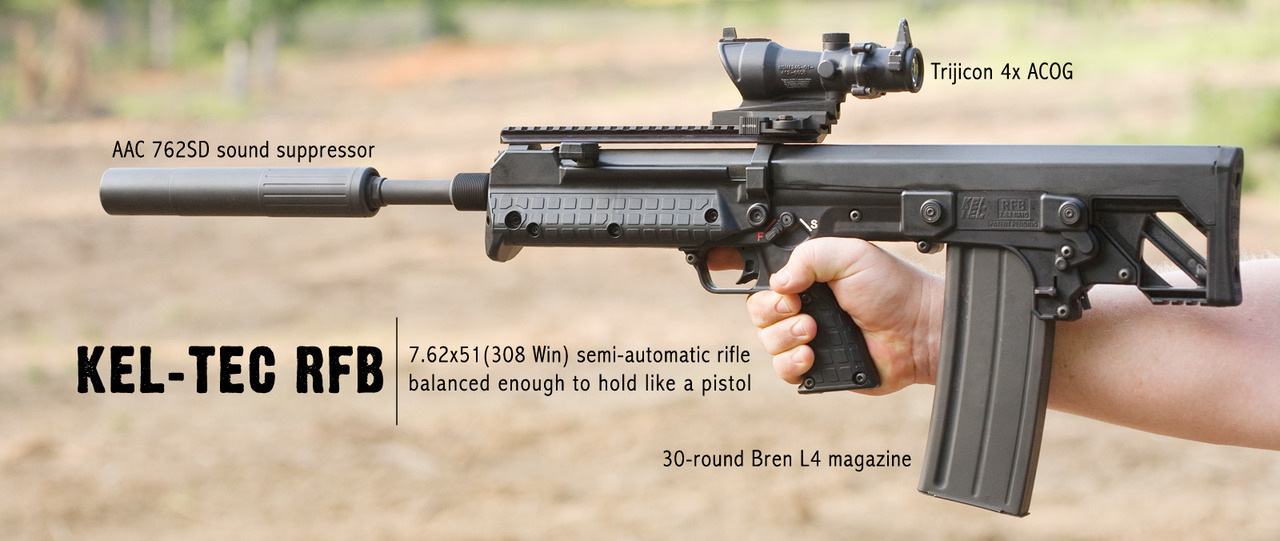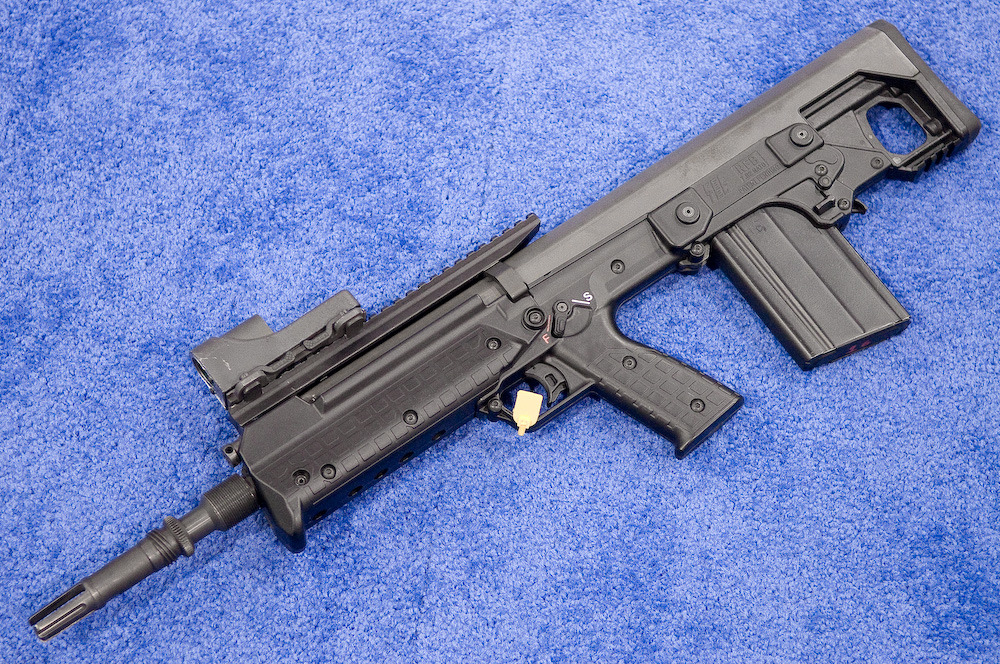Continue reading page 02
6: Mauser K98k Carbine
Type: Bolt-Action Rifle
Country of Origin: Germany
Caliber: 7.92 x 57 mm (.30 inch)
Cartridge Capacity: 5 rounds
Muzzle Velocity: approximately 2,822 feet per second
Rate of Fire: 10-15 rounds per minute
First produced at the end of the 19th century, the Mauser 98 was the perfect synthesis of the many innovations that rifles had undergone during the late 19th
century: smokeless powder, clips that could be fed into magazines and, most of all, its superb bolt action that is still the basis for
most modern hunting rifles. The original model 98 was used during World War I to great effect, but when Germany started
rearming in the 1930s the rifle received upgrades that made it lighter and easier to sight and shoot. Inevitably outgunned by
automatic weapons, the Mauser
nevertheless stands as one of the legendary rifles of the modern age
5: FN FAL
Type: Semi or Fully Automatic Rifle
Country of Origin: Belgium
Caliber: 7.62 x 51 mm (.30 inch)
Cartridge Capacity: 20 rounds
Muzzle Velocity: Approximately 2,700 feet
per second
Rate of Fire: 650-700 rounds per minute
Inspired by the Sturmgewehr 44, the Belgian manufacturer Fabrique Nationale (FN) originally developed the FAL around the
same intermediate round used by the German gun, but when NATO issued the requirement for the longer 7.62 mm, FN altered the design and created a heavy hitter
that packs a punch -- and a potent kick. The FAL soon became one of the classic weapons of the Cold War, used by over 50 countries, even if it proved tough to handle
in full auto mode. The rifle gave good service to the Australian army in the jungles of Vietnam, to Israeli troops during the Six-Day
War and was used by both sides in the fight for the Falkland Islands.
4: M1 Garand
Type: Semiautomatic
Rifle Country of Origin: United States
Caliber: 7.62 x 63 mm (.30-06 inch)
Cartridge Capacity: 8 rounds
Muzzle Velocity: Approximately 2,838 feet per second
Rate of Fire: 30 rounds per minute
Adopted by the U.S. Army in 1936, the M1 Garand proved to be a tough, heavy battle rifle when it entered combat five years later.
General Patton remarked at the end of World War II that the M1 may have been the greatest battle implement ever devised. A bit
of a stretch perhaps, but there's no doubt that the M1 was the first successful semiautomatic rifle issued in any quantity that had the ruggedness and accuracy to
dominate the battlefield. Over 6.25 million Garands had been manufactured by the time
it was taken out of service in the early 1960s.
3: Lee-enfield SMLE
Type: Bolt-Action Rifle
Country of Origin: United Kingdom
Caliber: 7.7 x 56 mm (.30 inch)
Cartridge Capacity: 10 rounds
Muzzle Velocity: approximately 2,438 feet
per second
Rate of Fire: 15-20 rounds per minute
The standard infantry weapon of British troops from World War I to the 1956 Suez crisis, the Lee-Enfield SMLE (pronounced"smelly") built its reputation on reliability,
accuracy and a phenomenal rate of fire. Its magazine carried 10 bullets, the largest capacity of any rifle on the battlefield during
the first half of the 20th century. Its short bolt action cocked on closing, and its muzzle cap prevented dirt from clogging the
weapon. In the hands of a well-trained infantryman, the Lee-Enfield could perform what was called the "mad minute," i.e., thirty rounds hitting a target 200 meters distant in one minute, a volume of fire that rivals
modern semiautomatic weapons.
Continue Reading page 03
2: M16
Type: Semi or Fully Automatic Assault Rifle
Country of Origin: United States
Caliber: 5.56 x 45 mm (.223 inch)
Cartridge Capacity: 20-30 rounds
Muzzle Velocity: Approximately 3,281 feet
per second
Rate of Fire: 700-950 rounds per minute
Although it took a little time to work out the gun's jamming problems during its combat
trials in the early 1960s, the M16 has proven to be an outstanding performer with superb accuracy, handling, service length and
combat effectiveness. The rifle fulfilled the U.S. military's desire to develop a lightweight modern assault rifle that could replace the
semiautomatic M1 and its selective-fire counterpart, the M14. Its innovative features
include lighter metal alloy and plastic construction, a simple gas reload system and the use of 5.56 mm ammunition, allowing soldiers to carry twice the amount
of ammunition for the same weight of 7.62 mm rounds.
1: AK-47
Type: Semi or Fully Automatic Assault Rifle
Country of Origin: Soviet Union
Caliber: 7.62 x 39 mm (.30 inch)
Cartridge Capacity: 30 rounds
Muzzle Velocity: 2,329 feet per second
Rate of Fire: 600 rounds per minute
With over 75 million built worldwide, the AK-47 (a.k.a., "Kalashnikov") is a firearms
legend that has probably inflicted more lethal results than any other single weapon system ever produced. Built on the same
basic design as the German Sturmgewehr, it chambered an intermediate round and was
built from stamped parts. The AK-47 was not only easy to produce and relatively cheap, is also
proved remarkably easy to maintain and virtually immune to conditions that could easily take out other guns. Accuracy is
average, but the Kalashnikov compensates for this with its ability to unleash a lethal wall of lead.













